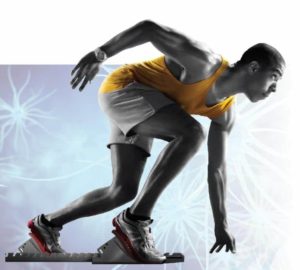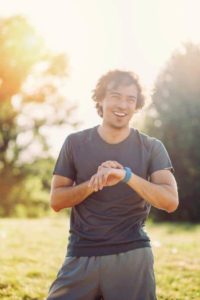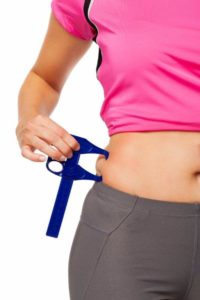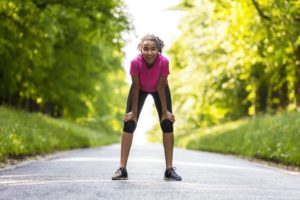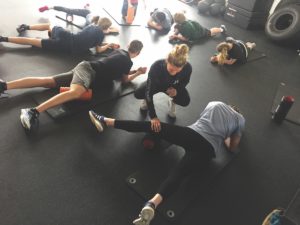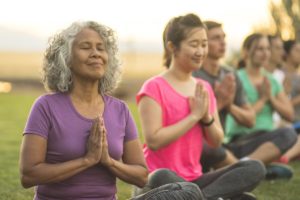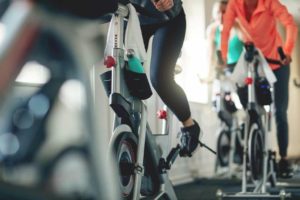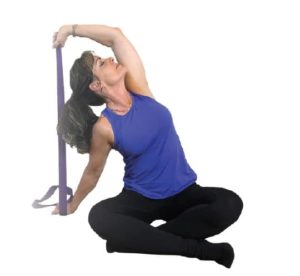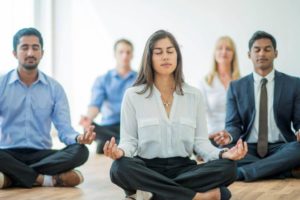Program Design/Sample Classes
Researchers Find a Link Between Activity Level, ALS
Made famous by legendary baseball player Lou Gehrig, amyotrophic lateral sclerosis, or ALS—a progressive neurodegenerative disease that affects nerve cells in the brain and spinal cord—has affected many athletes. As such, researchers have wondered if high levels of physical activity might have something to do with the disease. Data from a new study out of Europe furthers the conversation.
The Long-Term Benefits of Pedometer Use
Studies show that tracking daily steps with a pedometer leads to higher activity levels. A new report out of the U.K. suggests the practice can inspire people to take more steps for many years.
The report included data from two separate 12-month studies; one involved inactive adults aged 45–75, while the other featured older adults aged 60–75. In the first, participants were assigned to one of three 12-week pedometer-based interventions—consultation with a nurse, support by mail or no consultation. In the second, there was no mail support group.
Research Review: Pros and Cons of Standing
Sitting for extended periods of time is now considered as dangerous as smoking cigarettes, and as a result, many people have taken to standing during the workday. New research is shedding light on both positive and negative effects of the current trend.
Stand Up for Weight Loss
Body Fat Is Better Indicator of Type 2 Diabetes
Here’s more reason to apply a battery of assessments when determining a client’s health status. Scientists have found that body fat percentage is a more accurate indicator of a person’s risk for prediabetes or type 2 diabetes than other popular measures like body mass index.
Top Money Tips for Fit Pros
Money is often a dirty word among fitness professionals. Most get into the business to help others, but you can’t pay bills with good intentions, says Frank Pucher, owner of Fitness 121 Personal Training in Roseland, New Jersey, and author of Smart Money Moves: A Practical Approach for Earning, Growing & Protecting Your Money. He adds that the financial side of fitness should receive as much detailed attention as the programs you design.
What Type of Exercise You Do as a Kid May Determine Your Weight as an Adult
According to new research, the kind of physical activity you do in childhood could predict whether you will be overweight as an adult.
Published in Medicine & Science in Sports & Exercise (2018; 50 [4],
709–14), the study examined the relationship between adult weight gain and the following types of exercise in childhood: running, sports and/or fitness/dance.
Are You as Active as You Think You Are?
When it comes to physical activity levels, our self-perceptions shouldn’t always be trusted, say researchers across the U.S. and Europe.
Strong Hands = Strong Brains?
Could there be a handy new solution for improving cognitive health? Maybe, say U.K. researchers who found that people with significant grip strength tend to have healthier brains.
Why Water Fitness?
While water fitness was once the domain of older adults, now participants of all ages and ability levels are benefiting from aquatic workouts. Shirley Archer, JD, MA, water fitness specialist and health and wellness blogger, examines what’s new in aquatic training research and looks at different types of programs.
Research Update
Here are some of the newer findings related to aquatic training:
Sample Class: Step With Variations
Step classes are still alive! Many participants remain eager for creative yet easy-to-follow choreography. You can keep yours simple while retaining some of the frills that people enjoy. Here’s an example: This class starts with one 32-count step combination for the warmup and continues with four variations on that combo during the main segment. Try this choreography during your next step class.
Step With Variations Details
GOAL/EMPHASIS:cardiovascular workout with classic 32-count step choreography
Teaching Yoga at the Wall
As a yoga teacher, you guide participants through a practice that deepens their understanding of asanas (poses) and how these take shape in students’ bodies. You cue, coach, align, adjust, demonstrate and discuss, and you offer tips on breathing, anatomy, “feel” and sensation. Often, the most effective way to help participants understand a specific element is to slow down, grab a prop or two, and work a little deeper. You may have access to straps, blocks and bolsters, but you might be forgetting another perfect “prop”: the wall.
A for Effort
client: Kent Denver School Students | personal trainer: Laura Bordeaux, strength and conditioning coach, Kent Denver School location: Englewood, Colorado
A complete course load. Think of it as core curriculum—literally. The Kent Denver School, a college-preparatory institution outside of Denver, offers a comprehensive educational experience that emphasizes both academics and sports. That’s where Laura Bordeaux comes in.
Stand Up to Aging
Getting up off the ground grows more difficult as we age. Muscles and bones weaken, coordination becomes less fluid, and simply doing chores around the house gets more challenging. Ground-to-standing (G2S) exercises address these changes. hile even performance athletes can benefit from G2S drills (see the sidebar “G2S Exercises Also Help Performance Athletes”), they’re supremely helpful for older exercisers who are at risk for broken hips and other threats to their mobility.
Barre Moves for Core Development
Barre classes focus on the core throughout the entire workout and have many ardent followers. Why not use barre-inspired moves in the core section of your HIIT or boot camp class? Your participants will love these variations on classic core fundamentals!
Question of the Month
Summer is a fun time to exercise outside, and the benefits of green exercise are getting attention. Are you or your facility offering any outdoor summer programs that use nature as a backdrop? If so, please describe the programs you’re promoting, your target demographics, and how you’re using nature as a key element.
Creative Ideas That Inspire
TabataRide, offered at various JoyRide® locations and based on Tabata™ workouts, is an indoor cycling class that offers high-intensity interval drills that include 20 seconds of top effort and 10 seconds of recovery, repeated for 4 minutes. This is followed by 1 minute of rest before repeating the cycle. The high-energy, super-athletic classes at this studio are designed to “torch calories and boost endorphins.” In addition, the instructors strive to provide authenticity, joy, humor and positivity.
Sample Class: Mindful Restoration and Recovery
High-intensity interval training has been all the rage for a while now, but participants are finally starting to recognize the benefits of recovery. During this restorative phase, the body repairs itself, which leads to optimal training improvements. The following class supports the recovery process by exploring mindfulness, relaxation and breathing techniques. It also addresses body awareness, muscle tension and myofascial trigger points. Make this a stand-alone 60-minute class or condense it to a 30- or 15-minute session.
How (and Why) to Host a Family-Themed Indoor Cycling Class
Every Thursday morning, my cycle studio fills with an array of participants, ranging from accomplished Ironman® finishers to preschool moms trying to maximize their minutes—and Nora, a 92-year-old great-grandmother. Together we pedal like maniacs, laugh, sing a few refrains and walk out soaked through with sweat. In the cycle studio, participants of all ages and abilities can be motivated by being in a group, but riders can still slow down when they need to without sticking out. In fact, my own cycling journey began when I was pregnant and in search of a low-impact workout.
Facilitated Flexibility
While some participants don’t stick around for the cooldown, those who do are rewarded with the many benefits that stretching offers. Help students go a little deeper with a very simple yet versatile tool: a stretching strap.
Straps are great to have in your fitness toolbox (and relatively inexpensive for the program manager’s budget). They not only assist with proper positioning and numerous techniques but also nullify the “I’m not flexible enough” excuse.
Five Techniques
Before we get to the stretches, consider these options:
Corporate Fitness Evolves
Employers are looking for partners to provide experiences and solutions in social, emotional, financial, family and career growth and well-being,” says Grace DeSimone, national group fitness director with Plus One Health Management, an Optum company, in New York City. Companies are also embracing mindfulness, meditation and virtual solutions for telecommuting employees, according to DeSimone. All these changes represent an evolution from programs aimed primarily at improving physical health and controlling healthcare costs.
